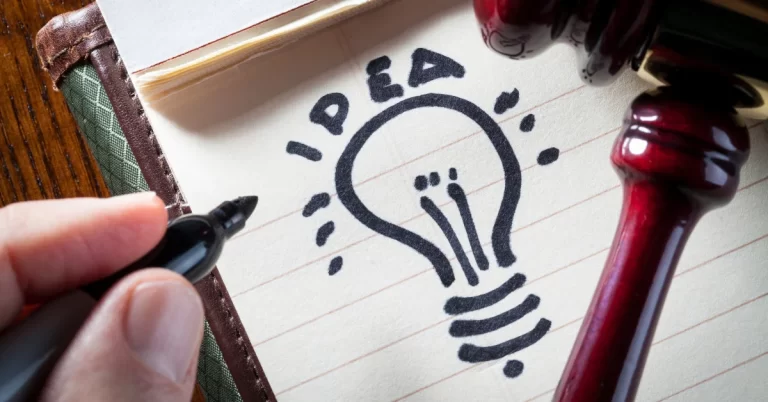How I would Redesign the Patent System (If I Could)
Let me start with something important:
I believe in the patent system.
Not in a perfunctory, professional-obligation kind of way. In a genuine, I’ve-seen-this-change-lives kind of way.
I’ve watched it protect innovations that literally save lives. I’ve seen the transformation in a founder’s confidence when they secure their first patent. I’ve witnessed the profound validation that comes when someone’s idea—often born from late nights, countless failures, and stubborn persistence—receives formal recognition and legal protection.
But I’ve also seen the cracks in the foundation.
I’ve worked with brilliant inventors who abandoned the patent process because they couldn’t afford the $15,000+ journey from application to grant. I’ve read rejection letters that made me wonder if the examiner and I were looking at the same invention. I’ve crafted claims that felt less like celebrations of human ingenuity and more like technical translations designed to navigate a byzantine legal labyrinth.
These experiences have led me to a question I keep turning over in my mind:
If I could redesign aspects of the patent system—not demolish it, but thoughtfully renovate it—what would I change?
This isn’t a manifesto for revolution. It’s a sketch of possibilities. A hopeful blueprint for how we might make this essential system smarter, fairer, and more inclusive without compromising its fundamental purpose.
1. Make the Process More Human-Centered
Let’s start with something fundamental: patents aren’t just about technology. They’re about people—their insights, their labor, their contributions to progress.
And yet, the process often feels clinically detached from this human element—cold, rigid, and opaque in ways that serve neither inventors nor the public good.
What if inventors could submit a plain-language explanation of their work alongside their technical disclosure? Not replacing the precise claims and detailed specifications, but complementing them with context that helps examiners understand the problem being solved and why the solution matters.
What if patent examiners were trained not just to evaluate claims against prior art but to understand the inventive context—the problem space, the constraints, the breakthrough moment?
What if we designed the system around meaningful communication rather than procedural compliance alone?
This wouldn’t replace necessary rigor. It would make that rigor more accessible and more accurately applied. It would help ensure that patents protect what actually matters in an invention, not just what happened to be most carefully worded in the claims.
2. Create On-Ramps for First-Time and Underrepresented Inventors
The current patent system unconsciously favors those who already know how to navigate it—large companies with in-house counsel, serial inventors who understand the process, universities with established technology transfer offices.
But innovation isn’t confined to well-funded labs and corporate R&D departments. It emerges from garages and basement workshops, from community labs and classrooms, from startups running on determination and ramen noodles.
We could create meaningful pathways for these inventors:
- Establish a tiered fee structure that significantly reduces costs for qualified first-time applicants
- Fund pro bono clinics that pair independent inventors with registered agents or attorneys
- Develop genuinely helpful open-source tools that guide newcomers through basic claim strategy and common pitfalls
- Create provisional patent templates and examples that actually make sense to non-lawyers
Whether your innovation gets protected shouldn’t depend on whether you already know someone in the industry or can afford premium legal services. It should depend on whether your innovation genuinely advances the field and deserves protection.
3. Embrace AI and Automation—Thoughtfully
Let’s be honest: patent practice involves substantial amounts of pattern-based, repeatable work.
Drafting standard sections. Classification. Prior art searching. Responding to routine office actions.
What if we leveraged AI tools to handle these repetitive elements—not to replace human judgment, but to free up human cognitive capacity for the aspects that truly require wisdom and contextual understanding?
Imagine:
- Natural language processing tools that flag potential claim ambiguities or antecedent basis issues before filing
- Semantic search algorithms that surface genuinely relevant prior art instead of keyword-matched document dumps
- Interactive claim scope visualizers that help inventors and agents collaboratively understand protection boundaries
The key principle: these tools should amplify human capabilities, not attempt to replace human judgment.
Because truly understanding innovation—what it does, why it matters, how it should be protected—still requires qualities that AI lacks: judgment informed by experience, empathy for the inventor’s journey, and contextual understanding of the field’s evolution.
4. Reconsider What “Obvious” Means in an Era of Rapid Iteration
The concept of “non-obviousness” made perfect sense in an industrial era where innovations were physical, discrete, and developed over extended timeframes.
But in an age where code repositories are forked daily, where machine learning models evolve through thousands of iterations, where prototypes transform overnight, the boundary between “obvious” and “non-obvious” becomes increasingly blurred.
We should thoughtfully reconsider:
- Is the current standard protecting genuine originality—or inadvertently penalizing the small but crucial advances that characterize modern digital innovation?
- Should we weigh functionality and real-world impact more heavily than implementation mechanics in rapidly evolving fields?
- Can we develop more nuanced frameworks for evaluating non-obviousness that account for the collaborative, iterative nature of modern innovation?
Innovation today isn’t always characterized by dramatic leaps. Sometimes, it manifests as seemingly small adjustments that unlock disproportionate value. Our system should recognize and protect these contributions too.
5. Reframe the Patent System’s Role in Society
This is perhaps the most fundamental shift we need to consider.
We typically discuss patents as technical and legal tools. But they’re also powerful social signals and economic instruments.
They communicate: This idea matters. This person contributed meaningfully. This work deserves recognition and protection.
If we genuinely want a more equitable innovation economy—one that encourages diverse participation and addresses a broad spectrum of human needs—the patent system must be part of that conversation:
- Who is being included in the current system, and who remains effectively excluded?
- What types of problems are we incentivizing people to solve through our protection frameworks?
- How do we ensure the system evolves alongside the changing nature of innovation itself?
- How might we measure the system’s success not just by efficiency metrics but by its effectiveness in encouraging solutions to meaningful problems?
These questions aren’t simple to answer. But they’re essential to ask if we want a patent system that truly serves its highest purpose—promoting the progress of science and useful arts for the benefit of society as a whole.
To Be Absolutely Clear…
I’m not advocating for dismantling or fundamentally replacing the patent system.
I respect this institution deeply. I work within it daily. I’ve witnessed its power to protect innovation and incentivize important work.
But I also believe that the systems most worth preserving are precisely the ones we should be most willing to thoughtfully improve.
The patent system has evolved significantly throughout its history—from handwritten applications to electronic filing, from purely mechanical inventions to software and AI innovations. Its ability to adapt has been key to its enduring relevance.
The suggestions above aren’t about weakening patent protection. They’re about ensuring that this vital system continues to serve its essential purpose in a changing world—encouraging innovation, rewarding creativity, and promoting progress that benefits us all.






